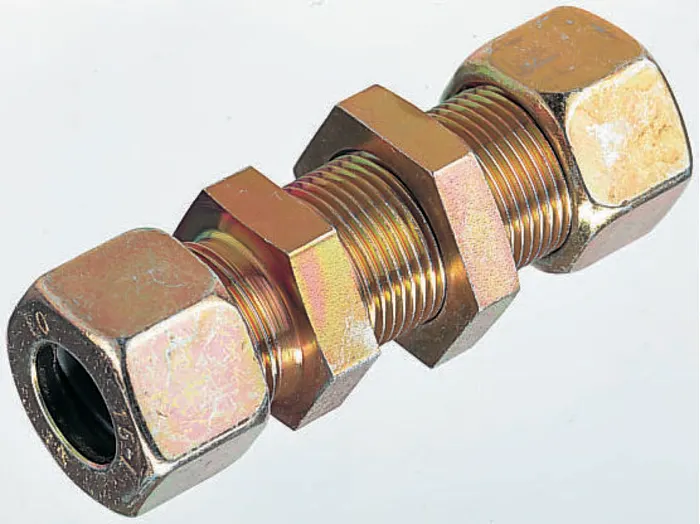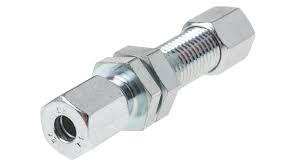Contact : +91-79045 61980 | Email: hydrofitengineers@gmail.com



HYDRAULIC BULKHEAD UNION
A hydraulic bulkhead union is a device used to connect two pipes or hoses together, often in applications where fluid needs to be transferred between them. This type of union is typically used in situations where one pipe or hose is located on one side of a wall or barrier, and the other is located on the opposite side. The bulkhead union allows fluid to flow through the wall or barrier while maintaining a secure and leak-free connection.
The union consists of two halves that are joined together by a bolted flange. The flange is typically made of metal and is designed to provide a secure seal between the two halves of the union. The two halves of the union are each attached to one of the pipes or hoses that need to be connected. The union is then mounted onto the wall or barrier, with one half of the union on each side of the wall or barrier.
Key Features of Bulkhead Union
One of the key features of a hydraulic bulkhead union is its ability to maintain a leak-free connection, even when the pipes or hoses are under high pressure. The flange design and the use of high-quality seals help to ensure that the connection remains tight and secure, preventing any fluid from leaking out of the union.
Another important feature of this union is its ability to withstand harsh operating conditions. Many applications for these unions involve fluids that are corrosive or abrasive, and the union must be able to withstand exposure to these substances over long periods of time. In addition, the union must be able to withstand high temperatures and pressures without becoming damaged or compromised.
Types of Bulkhead Union
There are several different types of hydraulic bulkhead unions available, each designed to meet the specific needs of different applications. Some of the key factors to consider when selecting a bulkhead union include the size of the pipes or hoses being connected, the type of fluid being transferred, and the operating conditions of the application.
Threaded Bulkhead : One common type of hydraulic bulkhead union is the threaded union. This type of union is designed to be screwed directly onto the pipes or hoses that need to be connected, providing a secure and reliable connection. Threaded unions are typically used in applications where the pipes or hoses are relatively small and the fluid being transferred is not too corrosive or abrasive.
Flanged Bulkhead : Another common type of hydraulic bulkhead union is the flanged union. This type of union uses a bolted flange to connect the two halves of the union together, providing a secure seal and preventing fluid from leaking out of the union. Flanged unions are typically used in applications where the pipes or hoses are larger and the fluid being transferred is more corrosive or abrasive.
Compression Bulkhead : A third type of hydraulic bulkhead union is the compression fitting union. This type of union uses a compression fitting to connect the pipes or hoses together, providing a secure and leak-free connection. Compression fitting unions are typically used in applications where the pipes or hoses are relatively small and the fluid being transferred is not too corrosive or abrasive.
In conclusion, hydraulic bulkhead unions are an essential component in many fluid transfer applications. They provide a secure and reliable connection between pipes or hoses that are located on opposite sides of a wall or barrier, allowing fluid to be transferred between them without the risk of leakage. When selecting a hydraulic bulkhead union, it is important to consider factors such as the size of the pipes or hoses being connected, the type of fluid being transferred, and the operating conditions of the application, to ensure that the union is able to meet the specific needs of the application.
